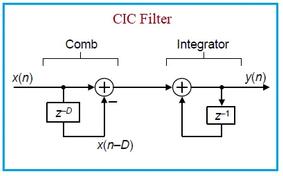Communication Systems in Electronics: An Overview
Advertisement
A communication system is a set of interconnected components working together to transmit information from one location to another. The primary goal is to convey information reliably and efficiently.
Communication systems are pervasive in our daily lives, taking various forms, including wired and wireless setups. These systems are diverse and found in many applications across different industries. Here are a few examples:
-
Mobile Phone Networks: Cellular networks like 4G and 5G are communication systems used for mobile phones, enabling voice calls, text messaging, and data transfer between devices.
-
Satellite Communication: Satellite communication systems use satellites in orbit to relay signals between ground stations. This is widely used for television broadcasting, global positioning systems (GPS), and long-distance communication.
-
Wi-Fi Networks: Wireless local area networks (Wi-Fi) are communication systems commonly used for local wireless connectivity, enabling devices like smartphones, laptops, and smart home devices to connect to the internet without physical cables.
-
Radio and Television Broadcasting: Radio and television broadcasting systems transmit signals over the airwaves to reach a wide audience, using amplitude modulation (AM), frequency modulation (FM), or digital broadcasting methods.
-
Computer Networks: Computer networks, including the internet, are extensive communication systems enabling the exchange of data between connected devices globally. This includes email, web browsing, file sharing, and various online services.
-
Fiber-Optic Communication: Fiber-optic communication systems use optical fibers to transmit data as pulses of light. These systems are known for high data transfer rates and are commonly used for long-distance communication and high-speed internet connections.
Block Diagram of a Communication System and Its Elements
Let’s explore the key elements of a communication system and its processes:
-
Source: The originator of the information that needs to be communicated. This could be a person, a computer, a sensor, or any device that generates data or messages.
-
Input Transducer: In some cases, the source might produce signals that are not suitable for direct transmission. An input transducer converts the information into a suitable form for transmission. For example, a microphone converts sound waves into electrical signals.
-
Transmitter: The transmitter processes the information from the source into a signal that can be transmitted over a communication channel. This involves encoding, modulation, and other signal processing techniques. Encoding involves converting the information into a suitable format for transmission, while modulation adjusts the characteristics of the carrier signal to represent the encoded information effectively.
-
Communication Channel and Noise: The communication channel is the medium through which the signal travels from the transmitter to the receiver. It can be wired or wireless and might include physical mediums like copper wires, optical fibers, or the air for wireless communication. Noise refers to any unwanted signals that can distort or interfere with the transmitted information. Noise can be introduced at various stages of the communication process, and communication systems are designed to minimize its impact.
-
Receiver: The receiver is responsible for capturing the transmitted signal from the communication channel and converting it back into a form that is understandable to the destination or output transducer.
-
Output Transducer: Similar to the input transducer, the output transducer converts the received signal into a form that is meaningful for the destination. For example, a speaker converts electrical signals back into sound waves.
-
Destination: The final endpoint where the information is intended to be received and used. It could be a person, a display device, a computer, or any entity that can interpret the information.

-
Feedback: Some communication systems incorporate feedback mechanisms to ensure the reliability and accuracy of the communication. Feedback involves sending part of the output back to the source or transmitter, allowing adjustments to be made based on the received information.
-
Protocols and Standards: Communication systems rely on protocols and standards to ensure compatibility and proper functioning. These define the rules and conventions for how data is formatted, transmitted, and received.
-
Multiplexing: In situations where multiple signals need to be transmitted simultaneously over the same channel, multiplexing techniques are employed to combine and then separate the signals at the receiving end.
These examples highlight the diversity of communication systems, each tailored to specific needs and applications. Advancements in technology continue to drive innovation, leading to more efficient, reliable, and versatile means of transmitting information, whether it be data, text, or other digital content.
Advertisement
 RF
RF



